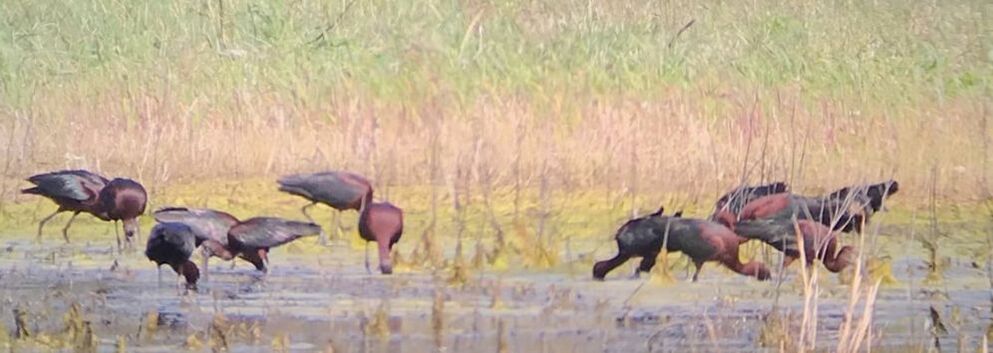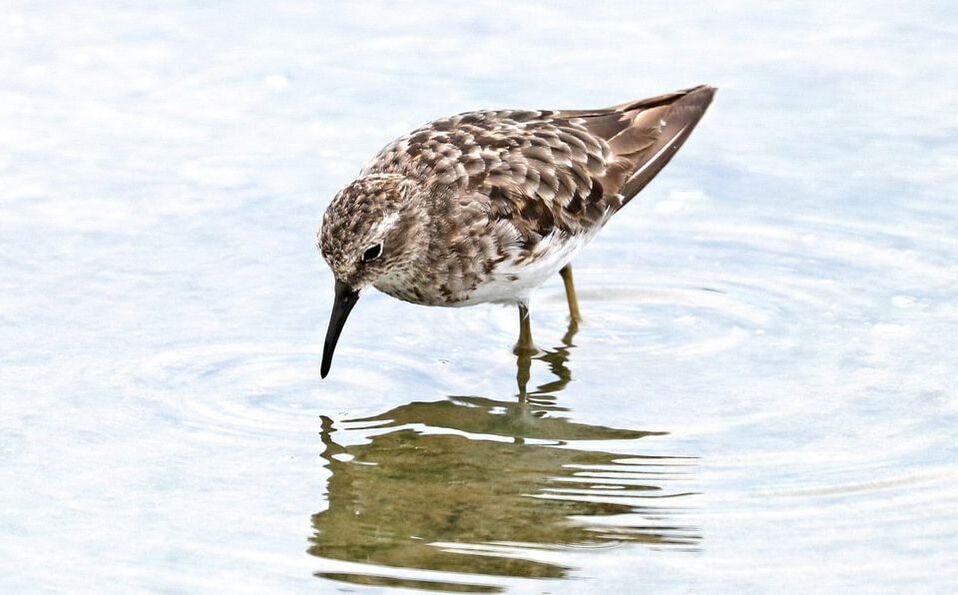Waders and Shorebirds
There are many species of birds that are normally found in the wide variety of wetland habitats, such as ponds, shorelines, mudflats, and marshes. This includes waders, shorebirds, etc. These videos were shot (and edited) with my spotting scope and iPhone...
In this video above, this shorebird is a Spotted Sandpiper, a common spring and fall migrant of fresh and saltwater shorelines. The bobbing of its tail up and down is very common, helping identify this species. The Spotted Sandpiper is found throughout most of the US and Canada during breeding season, and in Central and South American in the fall and winter.
|
These are the smallest shorebirds that we see here in migration. Referred to generically as 'peeps,' these are Semi-palmated Sandpipers and Least Sandpipers. Like the Spotted Sandpiper above, they are foraging in the exposed mudflats or shallow water for very small invertebrate animals. They will continue north into upper Canada habitats where they breed, and then come back in the fall as they fly south for the rest of the year in Central and South America.
|
This migratory wader is a Great Egret. About the size of the Great Blue Herons that are common in Maryland year-round, this beautiful bird will eat everything from small fish and frogs, to water snakes and other reptiles. (the loud bird calls in the beginning are from a nearby Boat-tailed Grackle)
This is a Snowy Egret, along with more peeps. The Snowy Egret is a smaller migratory wader, about 1/2 the size of the also-white Great Egret. A close look will reveal a black and yellow bill (beak) and black legs with yellow feet.
This video, shot in Ocean City, includes several black, white, and orange Ruddy Turnstones and one Red Knot. Some shorebirds enjoy picking treats to eat off of shoreline rocks.


